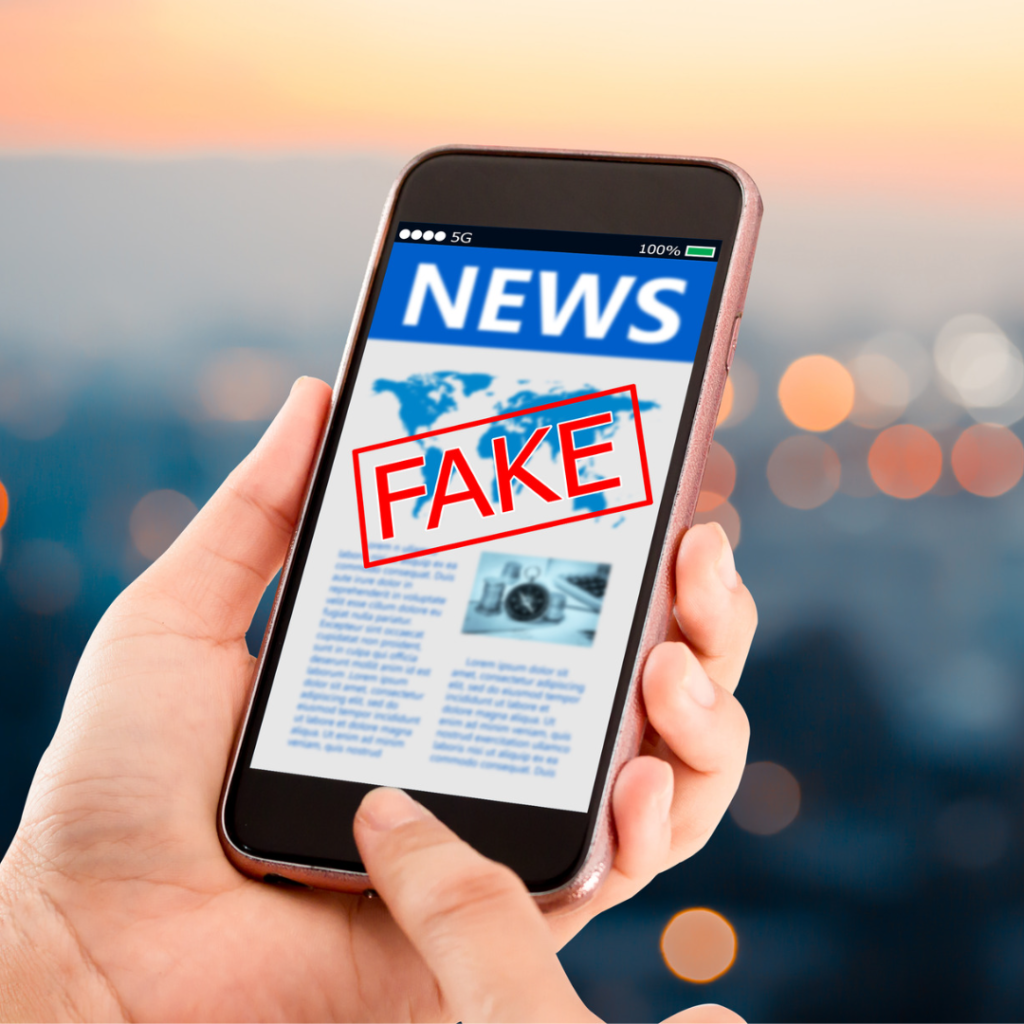Last Updated on January 8, 2025
Fake news is a growing problem. The volume of online misinformation has exploded in recent years – there are now more fake news websites on the internet than real news sources – and as AI grows more sophisticated, these false stories are getting even harder to identify.
So how do you begin to teach about fake news in the classroom? Start with an exploration of the rise of fake news, and why kids should care. Then, delve into the media literacy skills that students need to evaluate news critically. Teaching your students about fake news and how to identify it has never been more important.
What is Fake News?
Dictionary.com defines fake news as:
False news stories, often of a sensational nature, created to be widely shared online for the purpose of generating ad revenue via web traffic or discrediting a public figure, political movement, company, etc.
Fake news is created in order to influence public opinion about an issue or an election, and for some it is about making money – it’s meant to be spread and to be clickbait for online users.
In this amazing interview, students can hear directly from a man who creates fake news for a living. He talks about both why and how he made fake news during the 2016 presidential race between Hillary Clinton and Donald Trump: Hearing from a Fake News Creator.
In recent years, new technologies have given rise to deepfakes, an especially convincing form of fake news. These are manipulated video or audio files that typically show a person doing or saying something that did not happen. In this story, students can hear a deepfake recording of President Richard Nixon making a speech about astronauts that he never actually made: Debate: Will Deepfakes Change How People View Media?
What Makes Fake News a Problem?
The internet and artificial intelligence have changed the way we view and create our own news and information. Fake news has been part of America’s media landscape since the colonial period, but the sheer volume of information at our fingertips today, thanks to social media, has changed the dynamics.
A recent Stanford Graduate School of Education report shows that many students have trouble judging the credibility of information online. The results showed that more than 90 percent of high school students had a difficult time discerning the credibility of websites. Ask students to listen to a story about the Stanford research report: “How Can Students Become Prepared to Spot Fake News?”
How Does Social Media Help Spread of Fake News?
Teaching your students about fake news goes hand-in-hand with taking a critical look at the role of social media. Social media plays a major role in the spread of fake news by fueling the sharing of fake news— often without people realizing they are becoming part of the problem.
Research shows that more than half of millennials and GenZers access their news from online platforms such as TikTok, Instagram, and YouTube. The following Listenwise resources illustrate for students how and why a story can be fake or inaccurate but still widely shared and invite them to think about how to be informed consumers of information.
- Campaign to Fight Election Disinformation
- Impact of AI on Elections
- How Fake News Spreads Online
- Facebook Hires Fact Checkers for Fake News
- Debate: Is Social Media a Reliable Source of News?
- Debate: Is AI Image Creation Technology Dangerous?
- Debate: Should Social Media Sites Be Fined for Not Removing Fake News and Hate Speech?
- Debate: Should Facebook and Twitter Be Required to Protect Us?
How to Teach Your Students About Fake News
1. Teach students to think like fact checkers.
Students can use these checklists and strategies to learn how to fact check and vet information to know which sources to trust and which to reject.
- Fake Or Real? How To Self-Check The News And Get The Facts – NPR
- I taught my 5th-graders how to spot fake news. Now they won’t stop fact-checking me. – VOX
- Source reliability checklist – New York Times
- Fact checking: How to think like a journalist – Science News for Students
- FactCheck.org
- Snopes
- Real or Satire
- Politifact
2. Familiarize Students with REAL news.
In order to spot fake news students need to understand what real news looks and sounds like. Here is a great list of news sites to use as resources for building media literacy skills with your K-12 students:
- The New York Times Learning Network
- PBS NewsHour Daily News Lessons
- AllSides (news stories compared across multiple political perspectives)
- Tangle (news stories compared across multiple political perspectives)
3. Offer guided and independent practice in the classroom.
Looking for fake news lessons and classroom activities? Here are resources for combating fake news in your classroom:
- Media Literacy Resources – NewseumEd
- News & Media Literacy Toolkit – Common Sense Media
- Lesson Plan: An experiment in misinformation – PBS Newshour
- Lesson Plan: Fighting Fake News – KQED
- Mini-Lesson: How to Read the News Like a Fact Checker – Facing History & Ourselves
Additional Resources
- Evaluating Sources in a ‘Post-Truth’ World: Ideas for Teaching and Learning About Fake News – New York Times
- 5 Ways Teachers Are Fighting Fake News – NPR
- Lessons in Civic Online Reasoning – Stanford Graduate School of Education
- Checkology – Lessons from the News Literacy Project
- Teaching your students about fake news – Listenwise webinar (2016)

